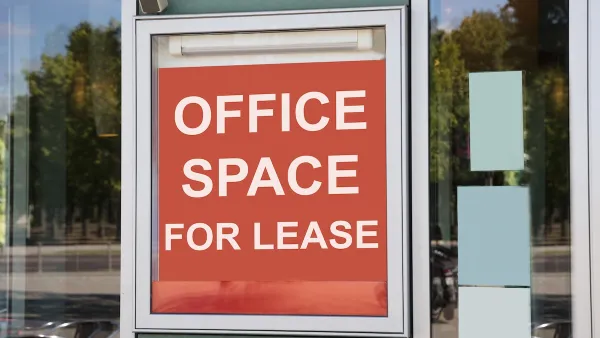A building’s potential for adaptive reuse is based on a variety of characteristics.

In an article for Columbus Business First, Bonnie Meibers describes some key factors that construction industry experts say make an office building a good candidate for adaptive reuse.
These include:
- Form: A building’s shape and ceiling heights dictate how adaptable it is for new uses.
- Floor plates: The size and shape of floor plates influences future uses.
- Envelope: The design of exterior walls impacts how well a building can meet energy and building code requirements.
- Services: Existing services like elevators and HVAC can be repurposed for future occupants.
- Context: The surrounding neighborhood, access to transit, and other nearby amenities will affect how well new tenants can integrate into the neighborhood.
- Code: Zoning codes sometimes prohibit a use change.
Officials in Columbus, Ohio are looking to the example of Calgary, Alberta, Canada, where the city launched an incentive program in 2021 to encourage developers to convert vacant buildings to new uses. “Programs including the Ohio Transformational Mixed-Use Development Tax Credit, the Ohio Historic Tax Credits and the city of Columbus' downtown residential tax abatement have closed the financial gap for many Central Ohio projects.”
FULL STORY: Experts say Central Ohio office buildings with these characteristics could be good candidates for conversion

National Parks Layoffs Will Cause Communities to Lose Billions
Thousands of essential park workers were laid off this week, just before the busy spring break season.

Retro-silient?: America’s First “Eco-burb,” The Woodlands Turns 50
A master-planned community north of Houston offers lessons on green infrastructure and resilient design, but falls short of its founder’s lofty affordability and walkability goals.

Delivering for America Plan Will Downgrade Mail Service in at Least 49.5 Percent of Zip Codes
Republican and Democrat lawmakers criticize the plan for its disproportionate negative impact on rural communities.

Test News Post 1
This is a summary

Test News Headline 46
Test for the image on the front page.

Balancing Bombs and Butterflies: How the National Guard Protects a Rare Species
The National Guard at Fort Indiantown Gap uses GIS technology and land management strategies to balance military training with conservation efforts, ensuring the survival of the rare eastern regal fritillary butterfly.
Urban Design for Planners 1: Software Tools
This six-course series explores essential urban design concepts using open source software and equips planners with the tools they need to participate fully in the urban design process.
Planning for Universal Design
Learn the tools for implementing Universal Design in planning regulations.
EMC Planning Group, Inc.
Planetizen
Planetizen
Mpact (formerly Rail~Volution)
Great Falls Development Authority, Inc.
HUDs Office of Policy Development and Research
NYU Wagner Graduate School of Public Service





























